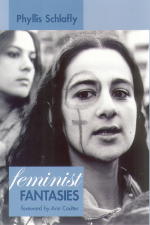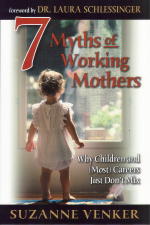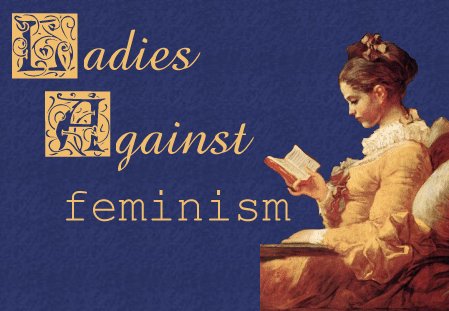by Leon Podles
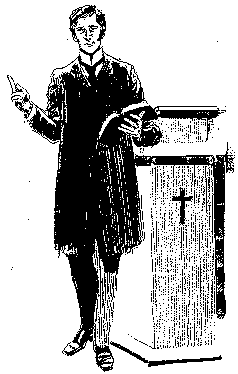 Despite constant feminist complaints about the
patriarchal tendencies of Christianity, men are largely absent from the
Christian churches of the modern Western world. Lay men often attend church
activities because a wife, mother, or girlfriend has pressured them. As, Tom
Forrest, a priest active in international evangelization, points out, only
twenty-five percent of the participants in Catholic gatherings he has attended
are men, and "when men do come, they are often brought along with some
resistance by their wives."
Despite constant feminist complaints about the
patriarchal tendencies of Christianity, men are largely absent from the
Christian churches of the modern Western world. Lay men often attend church
activities because a wife, mother, or girlfriend has pressured them. As, Tom
Forrest, a priest active in international evangelization, points out, only
twenty-five percent of the participants in Catholic gatherings he has attended
are men, and "when men do come, they are often brought along with some
resistance by their wives."
While men still run most churches, women
outnumber them in the pews in Europe, in the Americas, and in Australia. And
the absence of males is not of recent origin. Cotton Mather puzzled over it,
and medieval preachers claimed women practice their religion far more than men
did. But men do not show the same aversion to all churches and religions. The
Orthodox seem to have a balance, and Islam and Judaism have a predominantly
male membership. Something seems to be creating a barrier between Western
Christianity and men. Why is it that men in the west are so little interested
in religion and that the men who are interested often do not follow the
general pattern of masculinity? Why doesn't religion seem to interest men
much, until they reach old age?
The Religious Male
Historians, theologians, and a clergymen have occasionally noticed the lack of churchgoing men in their own area of study or responsibility, but no one has surveyed the evidence for the lack of men throughout Western Christianity. Scholars try to explain males' relative lack of interest by the peculiar historical or social situation with which the scholars are concerned, but scholars of colonial American history show little awareness of medieval Germany, and sociologists confine their studies to situations they can measure.
The clergy have the most direct, practical interest in the situation, but they have shown a remarkable lack concern. It seems that the clergy are not unhappy with the absence of men. Women are easier to deal with: even feminists can be satisfied to some extent. Hymns and the Bible are being rewritten to expunge references to men; the few men in the congregation will not protest. Protestant churches ordain women, the seminaries are already half female, and the Protestant clergy will be a characteristically female occupation, like nursing, within a generation. If priests are unavailable, Rome allows Catholics who are not priests to be appointed administrators of parishes. This permission is intended for mission countries, but American bishops have seized on this provision And appointed nuns and divorced laywomen to head parishes, while staffing their diocesan bureaucracies with priests or even leaving priests to cool their heels without assignments.
Because Christianity is now seen as a part of the sphere of life proper to women rather than to men, it sometimes attracts men whose own masculinity is somewhat doubtful. By this I do not mean homosexuals, although a certain type of homosexual is included. Rather, religion is seen as a safe field, a refuge from the challenges of life, and therefore attracts men who are fearful of making the break with the secure world of childhood dominated by women. These are men who have problems following the path of masculine development. Is a truism among Catholics that priests become priests because of the influence of their mothers, and many priests are emotionally very close to their mothers, more so than to men, even to their fathers. The sentimental sermons on but Day used to be a great set piece, a five-hanky special, in Catholic churches. Even devotion to Mary was affected. Such devotion has a sound a theological basis, but tended to replace a relationship to Christ or to the Father. The rationale for this was sometimes made explicit.
At one American Seminary in the 1940's, a professor developed a following, which later matured into a small cult. He explained Catholic devotion to Mary in this way: men have a more distant relationship with their fathers than with their mothers. They therefore have more trouble relating to a masculine God (the Father or Jesus) than to the reflection of maternal love in Mary. Devotion to Mary, on this view but, should be stressed more than devotion to Christ. Despite the extraordinary theological implications of this line of thought, the professor obviously struck a nerve in his seminary and disciples: they were the sort of men who felt more comfortable with the feminine than with the masculine. The situation holds true in most of the Protestant clergy. Mary was not available, but first sentimentality, and now feminism, have filled the void.
The clergy have long had the reputation of not being very masculine. The main line, liberal Protestant minister in the early twentieth century had a reputation for being soft and working best with women. They were seen as exempt from masculine trials and agonies, part of the safe world of women. As one layman put it, "Life is a football game, with the men fighting it out on the gridiron, while the minister is up in the grandstand, explaining it to the ladies."
In their study, Lewis M. Terman and Catherine Cox Miles used a masculinity-femininity test that characterized answers to a questionnaire as indicative of masculinity and femininity if men tended to answer a question one way and women another. Young men, athletic men, and uneducated men tended to be more consistently masculine than old men, sedentary men, and educated men but. Men who were interested in religion were less masculine than the average man: "Interest in religion or art is a mark of definitively greater femininity than lack of interest in these matters." Men who showed little interest in religion had more masculine scores:
Most masculine of all are still the men who have little or no interest in religion. Very masculine men showed little interest in religion, very feminine men great interest. Women who have highly feminine scores were also especially religious, while women who had more masculine scores were neutral or adverse to religion. The difference was clearly not physical sex, but attitude, or gender, as the term is now used.
Terman and Miles gathered data from three groups: Catholic seminarians, Protestant seminarians, and Protestant ministers. As one might expect, men attracted to the religious life differ strikingly in their masculinity from the general male population:
The Catholic [seminarians] score at a point far less masculine than any other male group of their age; in their early twenties they are more feminine than the general male population at middle life. The Protestant theological students in their middle twenties are, however, more feminine than they and exceed in femininity the sixty year-old man of equal education. The adult ministerial group is barely more masculine than the Protestant theological students and less so than the student priests. They exceed in femininity the college educated man of the seventh decade.
Terman and Miles concluded that "some dominant
factors must be present in all three groups to make them, without regard to
age, conspicuously and almost equally lacking in mental masculinity."
Interestingly enough, the similarities between the Protestant and Catholic
groups and the Catholic group's slightly higher scores ruled out but as a
major factor in a but lack of masculinity. Neither does the lack of
masculinity have any necessary connection with sexual deviance.
Religious Observance in 20th Century America
The feminization of the clergy explains the lack of reflection on the subject that they should be interested in: why does half their potential congregation show a lack of interest in Christianity, an indifference that sometimes considers male attendance at church suspect?
The rapid feminization of the main line religious community in America has been going on for some time. The most exact figures for the ratio of women to men in religious denominations in the United States come from the 1936 census, the last governmental tally of religious affiliation: in Eastern Orthodoxy, .75-.99 to one; Roman Catholics, 1.09 to one; Lutherans, 1.04-1.23 to one; Mennonites, 1.44-1.16 to one; Friends, 1.40 to one; Methodists, 1.33-1.47 to one; Baptists, 1.35 to one; Assembly of God, 1.71 to one; Pentecostals, 1.71-2.09 to one; and Christian Scientists, 3.19 to one. The range among the other denominations follow the pattern, with the charismatic churches having a higher proportion of women. But all except the Eastern Orthodox had a majority of women in their membership.
Not only do women join churches more than men do, they are more active and loyal. Of Americans in the mid-1990's, George Barna writes that "Women are twice as likely to attend a church service during any given week. Women are also 50% more likely than men to say, they are 'religious' and to state that they are 'absolutely committed' to the Christian faith." These gender differences seem to be increasing rapidly. Lyle E. Schaler, an authority on church growth, observes that:
In 1952 the adult attenders on Sunday morning in the typical Methodist, Presbyterian, Episcopal, Lutheran, Disciples, or Congregational worship service were approximately fifty-three percent female and forty-seven percent male, almost exactly the same as the distribution of the adult population. By 1986... these ratios were closer to sixty percent female and forty percent male with many congregations reporting [even greater disparities].
In 1992, 43% of men attended church; in 1996 only 28%. Patrick Arnold, a Jesuit of liberal theological leanings, claims that at churches he has visited "It is not at all unusual to find a female to male ratio of 2:1 or 3:1. I have seen ratios in parish churches as high as 7:1." Furthermore, he notes, "some liberal Presbyterian or Methodist congregations are practically bereft of men." The Notre Dame study of Catholic Parish Life shows that in the 1990s women continued to participate in church life far more than men do:
- More than eighty-five percent of those involved in ministry to the poor, sick, and grieving are women, and social justice and peace efforts draw heavily on women;
- More than 80% of CCD teachers and sponsors of the catechumenate are women;
- More than 80% of prayer group members are women;
- More than 75% of those who lead or take part in the adult Bible study or religious discussions are women. Almost 60% of those involved in youth and recreational ministries are women;
- 52% of parish council members are female;
- 58% of those identified as the most influential leaders in the 36-parish survey were women.
Moreover, men and women differ not simply in the frequency of their participation in church activities, but in the attitudes that inspire their participation. Attitudes are, of course, harder to quantify than participation. Nevertheless, the techniques of American political poll taking have been applied to religious bodies by George Gallup Jr., a committed Episcopal layman with longstanding interest in religion in American society. While the questions asked in the Gallup poll were somewhat vague, replies confirmed the general pattern of difference between men and women in all matters of religion. Men and women not only act differently, they feel differently when it comes to religion.
After reviewing poll data George Barna observed that women tend:
Strongly to assert that the Bible is totally accurate in all it teaches; strongly to affirm the importance of religious faith in their life; strongly to disagree that Christ sinned while he was on earth; to choose an Orthodox, biblical description of their God; to meet the criteria for born-again Christians;... Strongly to agree that the Bible can be taken literally; to believe that if a person does not consciously accept Christ as his savior, he will be condemned to hell; to contend that the Bible teaches that "money is the root of all evil."
Men say they believe in God about as often as women do, but they attend church much less frequently, and they engage in private religious activities far less often. British sociologists Michael Argyle and Benjamin Beit-Hallahmi have observed that:
the sex ratio [women to men] is consistently greater for saying daily prayers than for church attendance or membership. The latter are again more under the influence of social pressures, while prayers are a private matter and reflect more spontaneous religious concerns. This suggests that the larger sex ratios should be taken more seriously than the smaller one.
The lack of men's commitment to the practice of the Christian religion is even more pronounced than the statistics for membership and external practice suggest.
The difference of feelings between men and women about religious matters is evidence of deep differences in fundamental approaches to religion and basic attitudes of faith. The Search Institute of Minneapolis studied five mainline Protestant denominations and the Southern Baptist Convention to determine the quality of faith among church members. Male church members had a far higher percentage of "undeveloped faith," which the institute defined as a lack of both the vertical dimension, a close personal relationship with God and the horizontal dimension, loving service of others, but large numbers of both men and women in the mainline churches have a weak, undeveloped faith.
"Integrated faith" combines both the vertical and horizontal dimensions, and the proportion of women to men who hold an integrated faith is 3:2 or 2:1 in the mainline denominations, the Southern Baptists being an exception. The only dimension in which men score consistently higher than women is in horizontal faith, the loving service of others without a close relationship to God. Southern Baptists are more religious than members of mainline denominations: almost half of Southern Baptists have an integrated faith that combines a personal relationship to God and loving service of others. Southern Baptists also have more success in fostering the faith of their male members.
Edward H. Thompson Jr. summarizes the received
wisdom: "Among women, religion appears to be more salient to everyday
activities, personal faith is stronger, a commitment to Orthodox beliefs is
greater, and involvement in religious ritual and worship is more common than
among men." In African-American denominations the preponderance of women it is
extreme: "Throughout all varieties of black religious activity, women
represent from 75 to 90 percent of the participants." Surprisingly, "men are
more under-represented in rural than in suburban churches."
The Problems of Femininity
Among Catholics, the few writers who have paid much attention to this long developing problem are Jesuits. As the early Jesuits were among the most masculine of Catholic religious movements, this is not surprising. Yet, other Catholic circles are full of committees and conferences on the place of women in the church, and almost none on the absence of men. Among Protestants some evangelicals are aware of the problem with men and try to reach out to them. Evangelical women perhaps realize the difficulty that men have with church and occasionally step aside to make room for men in leadership positions in which men feel most comfortable.
But a strong stream of evangelicalism, represented by Christianity Today, has made as many compromises as it can with feminism and ignores the problem of the lack of men in the church. Dr. James Dobson of Focus on the Family, who has noticed this tendency in Christianity Today, is one of the foremost evangelical leaders who is concerned with the role of men in the family and church.
If the evangelicals occasionally show some awareness of the lack of men, the mainline Protestants to not seem to think there is a problem. The situation is especially severe in black churches, whether established or storefront. Although the preachers are men, the congregations are overwhelmingly women. The absence of men has especially sad consequences for the black community.
The established churches have long made a parade of their concern for civil-rights and for the plight of minorities, but there is one minority whose cause they quietly ignore: black men. The problem of criminality and drug abuse among inner-city black men is a problem of the distortion of masculinity. But the liberal churches have little to say about masculinity except to condemn it as an obstacle to women's liberation. Churches that spend their energy hunting out and obliterating the last vestiges of patriarchy are in no position to help black men attain the status they so desperately need for their own good and the good of black women and children: that of patriarchs, responsible fathers who rule their families in justice and love.
Neither has the absence of men left women untouched. Unfortunately, women have been forced into the unnatural mold by Christians' misunderstandings of the feminine. Much of current feminism is an understandable reaction against the caricature of feminine roles. The breakdown of the proper relationship of masculinity and femininity, male and female, Adam and Eve, is at the root of many of the churches failures in the modern world, but this situation would not surprise the author of Genesis.
Originally published in CRISIS Magazine (February 1999)
END
Sexual Liberation is Illuminati Perversion
Lesbianism -Feminism's Dead End
Communist Takeover Began Long Ago
The Effect of Sexual Deprivation on Women
Gloria Steinem: How the CIA Used Feminism to Destabilize Society
ABORTION RITES: How Feminists Spirituality is Reframing the Abortion Debate (.PDF file)
American Communism and the Making of Women's Liberation
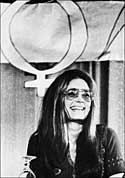 "By the year 2000,
we will, I hope, raise our children to believe in human potential, not
God."
"By the year 2000,
we will, I hope, raise our children to believe in human potential, not
God."
"It's an incredible con job when you think of it, to believe something now in exchange for life after death. Even corporations with all their reward systems don't try to make it posthumous."
-Gloria Steinem, women's rights activist
Feminist Fantasies No assault has been more ferocious than feminism’s forty-year war against women. And no battlefield leader has been more courageous than Phyllis Schlafly. In these dispatches from the front, feminism’s most potent foe exposes the delusions and hypocrisy behind a movement that has cheated millions of women out of their happiness, health, and security.
7 Myths of Working Mothers
Why Children and (Most) Careers Just Don't Mix
Dispelling our most cherished myths about working mothers, Suzanne Venker argues that women can never be successful in the workplace and at home simultaneously. Women can achieve the balance they so desperately seek only by planning their careers around motherhood, rather than planning motherhood around their careers.
“I'm not getting married. I'm not waiting on any man hand and foot.” —a feminist
Leading the pro-family movement since 1972 - Get Informed!
